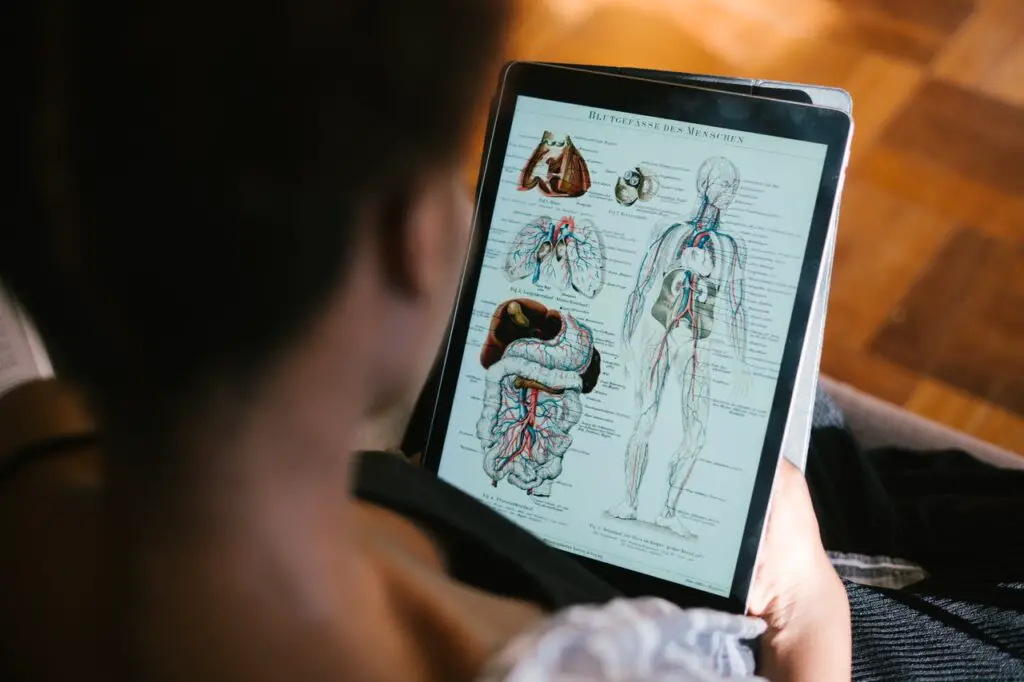On this page, you’ll find ten of the best psychiatry textbooks available for those just starting out in their psychiatric studies or looking to update their current knowledge. So, let’s get started!
Best Psychiatry Textbook
Best Psychiatry Textbook
Kaplan and Sadock’s Comprehensive Textbook of Psychiatry (2 Volume Set)
If you’re looking for the best psychiatry textbook, look no further than Kaplan and Sadock’s Comprehensive Textbook of Psychiatry. This two-volume set provides a comprehensive overview of all major psychiatric disorders, from schizophrenia and mood disorders to anxiety and eating disorders.
The book is also full of useful information on treatment modalities, including both traditional psychotherapies and newer biological therapies.
Theories of personality and psychotherapy are also covered in depth, as are the clinical manifestations of psychiatric disorders.
Substance-related disorders, schizophrenia, and other psychotic disorders are covered in detail, as are mood disorders, anxiety disorders, and more.
In addition, there are chapters on normal human sexuality, child psychiatry, geriatric psychiatry, and psychiatric emergencies.
With so much helpful information all in one place, Kaplan and Sadock’s Comprehensive Textbook of Psychiatry is an essential resource for anyone interested in the field of psychiatry.
Lewis’s Child and Adolescent Psychiatry: A Comprehensive Textbook
Lewis’s Child and Adolescent Psychiatry is the best child psychiatry textbook on the market. Dr. Lewis is a Yale-trained psychiatrist and research scientist who specializes in child and adolescent mental health. The book is based on the latest research in the field, including the Research Domain Criteria (RDoC) approach created by the National Institute of Mental Health.
It covers all aspects of child and adolescent psychiatry, from telepsychiatry and psychopharmacology to ethics and evidence-based practice. The book also includes sections on common disorders and syndromes, treatment options, and legal issues.
Best of all, all royalties from the book will go to the Break the Cycle initiative, which provides mental health services to underserved youth.
Kaplan and Sadock’s Concise Textbook of Child and Adolescent Psychiatry Illustrated Edition
Kaplan and Sadock’s Concise Textbook of Child and Adolescent Psychiatry is widely considered to be the best adolescent psychiatry textbook in the field.
The book provides a comprehensive overview of psychiatric disorders in children and adolescents, including assessment, examination, and psychological testing.
In addition, the book covers mental retardation, learning disorders, communication disorders, and pervasive developmental disorders. The book also includes a section on mood disorders and suicide, which is essential reading for any practitioner working with this population.
Overall, Kaplan and Sadock’s Concise Textbook of Child and Adolescent Psychiatry is one of the best psychiatry textbooks available and is an essential resource for anyone working in the field of child and adolescent psychiatry.
Principles and Practice of Geriatric Psychiatry (Agronin, Principles and Practice of Geriatric Psychiatry)
The book Principles and Practice of Geriatric Psychiatry is widely considered to be the best psychiatry textbook available on the subject. This is due to its focus on case studies and real-world examples, which make it an invaluable resource for students and practitioners alike.
The book provides a comprehensive overview of the basic principles of evaluation and treatment for specific disorders.
Plus, the book’s focus on pharmacotherapy and neuroanatomic psychiatric diseases makes it an invaluable resource for diagnosing deeper underlying problems that often go unrecognized.
As such, it is an essential reference for anyone working in the field of geriatric psychiatry.
The Psychiatric Interview
The Psychiatric Interview is one of the best psychiatry textbooks available. The book provides practical tips on interviewing, along with mnemonics and pocket cards to help psychiatric residents and nurse practitioners remember key points.
A DSM-5 primer and a synopsis of current research are also included in the book, making it an essential resource for psychiatrists looking for a quick refresher without having to wade through a dense textbook.
Plus, the bundled interactive eBook edition makes it even easier to access the content on the go. And whether you’re a psychiatrist, psychiatric resident, or nurse practitioner, The Psychiatric Interview is a must-have resource.
Neuropsychiatry and Behavioral Neurology: Principles and Practice
Neuropsychiatry and Behavioral Neurology: Principles and Practice is a comprehensive textbook that provides a detailed overview of Neuropsychiatry, with chapters on the neurocircuitry of emotions and cognition, neuropsychiatric assessment methods, and therapeutic modalities such as pharmacology and neurostimulation.
The book also includes chapters on specific neurobehavioral and neuropsychiatric syndromes, as well as on neuropsychiatric aspects of different neurological and medical diseases.
In addition to its wealth of information, the book is also visually appealing, with numerous full-color illustrations of brain anatomy, high-resolution brain CT and MRI scans, along with summary boxes that make it easy to quickly look up key points.
The Neuroscience of Clinical Psychiatry
The Neuroscience of Clinical Psychiatry is one of the best textbooks for those who want to know about the brain and psychiatric disorders. The book has four sections: The Neuroscience Model, Modulators, Behaviors, and Disorders.
The first section provides an introduction to neuroscience along with basic information on neuroanatomy, cells and circuits, neurotransmitters, receptors, and signaling.
The second section covers hormones and the brain, plasticity and adult development, immunity and inflammation, and the electrical brain.
The third section looks at behaviors such as pain, pleasure, appetite, anger and aggression, sleep, sex, social attachment, memory, intelligence, and attention.
The fourth section covers disorders such as depression, anxiety, schizophrenia, and Alzheimer’s disease.
In addition, the book includes a glossary of terms, which is extremely helpful for those who are new to the field.
Overall, The Neuroscience of Clinical Psychiatry is the best choice for anyone looking for a comprehensive introduction to psychiatry.
Kaufman’s Clinical Neurology for Psychiatrists (Major Problems in Neurology)
Kaufman’s Clinical Neurology for Psychiatrists provides a comprehensive overview of the field, covering everything from diagnosing psychiatric disorders to treatment options.
But what sets Kaufman’s apart from other textbooks is its focus on the neurology of psychiatric illnesses. The book includes life-like patient sketches, anatomy line drawings, CTs, MRIs, and EEGs that demonstrate clinical features. This allows readers to better understand how psychiatric disorders develop and what treatments are available.
In addition, Kaufman’s Clinical Neurology includes nearly 2,000 multiple-choice questions both in print and online. These questions can be used to prepare for the ABPN certifying exam, making Kaufman’s an essential resource for anyone interested in becoming a psychiatrist.
Shorter Oxford Textbook of Psychiatry
The Shorter Oxford Textbook of Psychiatry is a comprehensive guide to all aspects of psychiatry, from signs and symptoms of psychiatric disorders to classification, assessment, and ethical and civil law issues. Covering a wide range of topics, the textbook provides an excellent overview of the field of psychiatry for students and practitioners alike.
In addition to discussing various types of disorders, the book also covers reactions to stressful experiences, treatment approaches, and global mental health issues. With its clear writing style and extensive coverage, the Shorter Oxford Textbook of Psychiatry is an essential resource for anyone interested in this complex and fascinating field.
Stahl’s Essential Psychopharmacology: Neuroscientific Basis and Practical Applications
Stahl’s Essential Psychopharmacology is widely recognized as the premier textbook in the field of psychiatry. The book provides a comprehensive and accessible overview of the neuroscientific basis of psychopharmacological drug action, with an emphasis on the practical applications of this knowledge.
The book is divided into ten sections, each of which covers a different aspect of psychiatric disorders and their treatment.
Section one, Chemical Neurotransmission, provides an introduction to the basic concepts of neurotransmission and how drugs can alter neuronal function.
Section two, Transporters, Receptors and Enzymes as Targets of Psychopharmacological Drug Action, discusses the different types of receptors that are targeted by psychopharmacological drugs.
Section three, Ion Channels as Targets of Psychopharmacological Drug Action, covers the role of ion channels in psychiatric disorders.
Section four, Psychosis, Schizophrenia and the Neurotransmitter Networks Dopamine, Serotonin, and Glutamate discusses the relationship between psychosis and schizophrenia and the neurotransmitter networks that are thought to be involved in these disorders.
Section five, Targeting Dopamine and Serotonin Receptors for Psychosis, Mood and Beyond: So-Called ‘Antipsychotics,’ looks at the different types of antipsychotic drugs and how they work.
Section six, Mood Disorders and the Neurotransmitter Networks Norepinephrine and Gamma Amino Butyric Acid (Gaba), discusses mood disorders and how they are treated with medications that target the neurotransmitter networks norepinephrine and GABA.
Section seven, Treatments for Mood Disorders: So-Called ‘Antidepressants’ and ‘Mood Stabilizers,’ looks at the different types of antidepressants and mood stabilizers that are used to treat mood disorders.
Section eight, Anxiety, Trauma, and Treatment, discusses the treatment of anxiety disorders with medication.
Section nine, Chronic Pain and its Treatment, looks at chronic pain and how it is treated with medication.
Finally, section 10 looks at sleep disorders and their treatment with medication.
The Maudsley Prescribing Guidelines in Psychiatry (The Maudsley Prescribing Guidelines Series)
The Maudsley Prescribing Guidelines in Psychiatry book is a comprehensive and evidence-based reference for prescribing psychiatric drugs. The book provides clear and step-by-step guidance on how to select and use the most appropriate medication for each patient, taking into account the individual’s age, medical history, and other factors. The guidelines also address adverse effects and special populations, such as pregnant women and older adults. The book is an essential resource for psychiatrists, psychologists, and other mental health professionals who prescribe a wide range of psychiatric medications on a regular basis.
Massachusetts General Hospital Psychopharmacology and Neurotherapeutics
Massachusetts General Hospital Psychopharmacology and Neurotherapeutics is used by psychiatrists around the world and is frequently updated to reflect the latest changes in psychopharmacology.
The textbook provides a comprehensive overview of psychiatric medications, including current antiepileptic drugs, ADHD medications, and antidepressants. It also discusses the treatment of pain, drug-drug interactions, and side effects.
In addition, the book also includes bulleted points, case histories, algorithms, and references. Plus, there are downloadable multiple-choice questions to help you test your knowledge. Whether you’re a student or a practicing psychiatrist, this textbook is an excellent resource.
The American Psychiatric Association Publishing Textbook of Psychosomatic Medicine and Consultation-liaison Psychiatry
The American Psychiatric Association Publishing Textbook of Psychosomatic Medicine and Consultation-liaison Psychiatry covers all the bases when it comes to psychiatric assessment and consultation, legal and ethical issues, and psychological responses to illness, symptoms, and disorders.
The chapters on delirium, dementia, aggression and violence, depression, suicidality, psychosis, mania, and catatonia are particularly well done.
The textbook also does a great job with anxiety disorders, somatic symptom disorder, illness anxiety disorder, deception syndromes (factitious disorders and malingering), eating disorders, sleep disorders, sexual dysfunctions, and substance-related disorders.
If you’re looking for a comprehensive psychiatry textbook that covers everything from A to Z, this is the one you want.
Psychopharmacology Algorithms
Psychopharmacology Algorithms is a great resource for psychiatrists looking to find the best possible treatment for their patients. The book provides an overview of psychopharmacological drugs and their effects on the human brain, as well as guidance on how to make the best use of these drugs in order to maximize their therapeutic effect.
In addition, annual updates to the accompanying eBook ensure that Psychiatrists have the most up-to-date information available, while the ability to read it on any device makes it easy to access the content anytime, anywhere.
Table of Contents





















